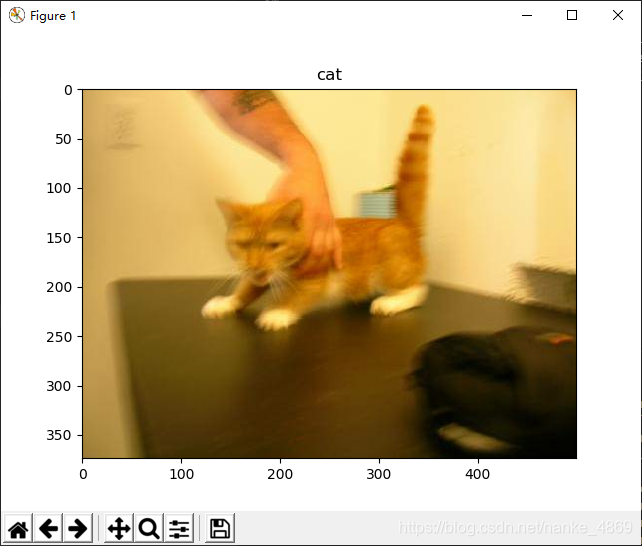Tensorflow教程笔记
- 基础
TensorFlow 基础
TensorFlow 模型建立与训练
基础示例:多层感知机(MLP)
卷积神经网络(CNN)
循环神经网络(RNN)
深度强化学习(DRL)
Keras Pipeline
自定义层、损失函数和评估指标
常用模块 tf.train.Checkpoint :变量的保存与恢复
常用模块 TensorBoard:训练过程可视化
常用模块 tf.data :数据集的构建与预处理
常用模块 TFRecord :TensorFlow 数据集存储格式
TFRecord 是 TensorFlow 中的数据集存储格式。当我们将数据集整理成 TFRecord 格式后,TensorFlow 就可以高效地读取和处理这些数据集,从而帮助我们更高效地进行大规模的模型训练。
TFRecord 可以理解为一系列序列化的 tf.train.Example 元素所组成的列表文件,而每一个 tf.train.Example 又由若干个 tf.train.Feature 的字典组成。形式如下:
# dataset.tfrecords
[
{
# example 1 (tf.train.Example)
'feature_1': tf.train.Feature,
...
'feature_k': tf.train.Feature
},
...
{
# example N (tf.train.Example)
'feature_1': tf.train.Feature,
...
'feature_k': tf.train.Feature
}
]
为了将形式各样的数据集整理为 TFRecord 格式,我们可以对数据集中的每个元素进行以下步骤:
- 读取该数据元素到内存;
- 将该元素转换为
tf.train.Example对象(每一个tf.train.Example由若干个tf.train.Feature的字典组成,因此需要先建立 Feature 的字典); - 将该
tf.train.Example对象序列化为字符串,并通过一个预先定义的tf.io.TFRecordWriter写入 TFRecord 文件。
而读取 TFRecord 数据则可按照以下步骤:
- 通过
tf.data.TFRecordDataset读入原始的 TFRecord 文件(此时文件中的tf.train.Example对象尚未被反序列化),获得一个tf.data.Dataset数据集对象; - 通过
Dataset.map方法,对该数据集对象中的每一个序列化的tf.train.Example字符串执行tf.io.parse_single_example函数,从而实现反序列化。
以下我们通过一个实例,展示将 上一节 中使用的 cats_vs_dogs 二分类数据集的训练集部分转换为 TFRecord 文件,并读取该文件的过程。
将数据集存储为 TFRecord 文件
首先,与 上一节 类似,我们进行一些准备工作,下载数据集 并解压到 data_dir ,初始化数据集的图片文件名列表及标签。
import tensorflow as tf
import os
data_dir = 'C:/datasets/cats_vs_dogs'
train_cats_dir = data_dir + '/train/cats/'
train_dogs_dir = data_dir + '/train/dogs/'
tfrecord_file = data_dir + '/train/train.tfrecords'
train_cat_filenames = [train_cats_dir + filename for filename in os.listdir(train_cats_dir)]
train_dog_filenames = [train_dogs_dir + filename for filename in os.listdir(train_dogs_dir)]
train_filenames = train_cat_filenames + train_dog_filenames
train_labels = [0] * len(train_cat_filenames) + [1] * len(train_dog_filenames) # 将 cat 类的标签设为0,dog 类的标签设为1
然后,通过以下代码,迭代读取每张图片,建立 tf.train.Feature 字典和 tf.train.Example 对象,序列化并写入 TFRecord 文件。
with tf.io.TFRecordWriter(tfrecord_file) as writer:
for filename, label in zip(train_filenames, train_labels):
image = open(filename, 'rb').read() # 读取数据集图片到内存,image 为一个 Byte 类型的字符串
feature = {
# 建立 tf.train.Feature 字典
'image': tf.train.Feature(bytes_list=tf.train.BytesList(value=[image])), # 图片是一个 Bytes 对象
'label': tf.train.Feature(int64_list=tf.train.Int64List(value=[label])) # 标签是一个 Int 对象
}
example = tf.train.Example(features=tf.train.Features(feature=feature)) # 通过字典建立 Example
writer.write(example.SerializeToString()) # 将Example序列化并写入 TFRecord 文件
值得注意的是, tf.train.Feature 支持三种数据格式:
tf.train.BytesList:字符串或原始 Byte 文件(如图片),通过bytes_list参数传入一个由字符串数组初始化的tf.train.BytesList对象;tf.train.FloatList:浮点数,通过float_list参数传入一个由浮点数数组初始化的tf.train.FloatList对象;tf.train.Int64List:整数,通过int64_list参数传入一个由整数数组初始化的tf.train.Int64List对象。
如果只希望保存一个元素而非数组,传入一个只有一个元素的数组即可。
运行以上代码,不出片刻,我们即可在 tfrecord_file 所指向的文件地址获得一个 500MB 左右的 train.tfrecords 文件。
读取 TFRecord 文件
我们可以通过以下代码,读取之前建立的 train.tfrecords 文件,并通过 Dataset.map 方法,使用 tf.io.parse_single_example 函数对数据集中的每一个序列化的 tf.train.Example 对象解码。
raw_dataset = tf.data.TFRecordDataset(tfrecord_file) # 读取 TFRecord 文件
feature_description = {
# 定义Feature结构,告诉解码器每个Feature的类型是什么
'image': tf.io.FixedLenFeature([], tf.string),
'label': tf.io.FixedLenFeature([], tf.int64),
}
def _parse_example(example_string): # 将 TFRecord 文件中的每一个序列化的 tf.train.Example 解码
feature_dict = tf.io.parse_single_example(example_string, feature_description)
feature_dict['image'] = tf.io.decode_jpeg(feature_dict['image']) # 解码JPEG图片
return feature_dict['image'], feature_dict['label']
dataset = raw_dataset.map(_parse_example)
这里的 feature_description 类似于一个数据集的 “描述文件”,通过一个由键值对组成的字典,告知 tf.io.parse_single_example 函数每个 tf.train.Example 数据项有哪些 Feature,以及这些 Feature 的类型、形状等属性。tf.io.FixedLenFeature 的三个输入参数 shape 、dtype和 default_value (可省略)为每个 Feature 的形状、类型和默认值。这里我们的数据项都是单个的数值或者字符串,所以 shape 为空数组。
运行以上代码后,我们获得一个数据集对象 dataset,这已经是一个可以用于训练的tf.data.Dataset对象了!我们从该数据集中读取元素并输出验证:
import matplotlib.pyplot as plt
for image, label in dataset:
plt.title('cat' if label == 0 else 'dog')
plt.imshow(image.numpy())
plt.show()
显示:
可见图片和标签都正确显示,数据集构建成功。
